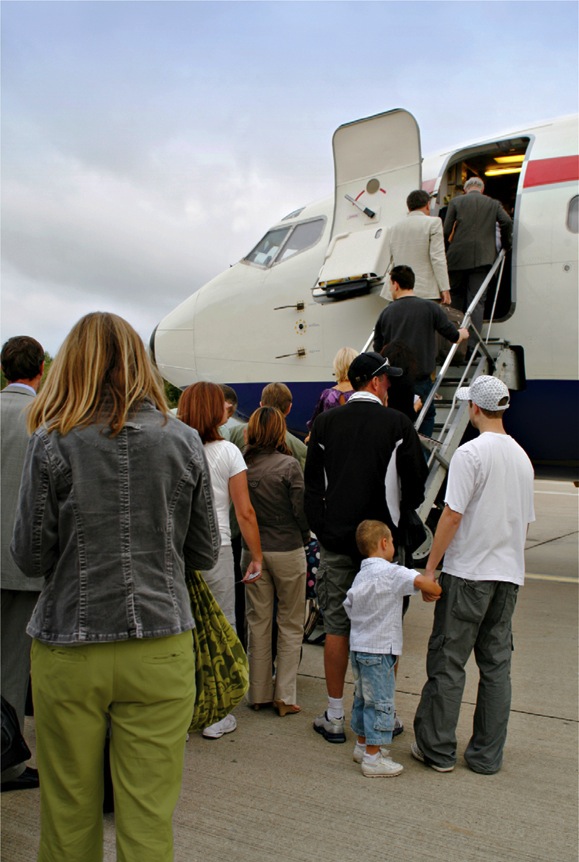An Elasticity Menagerie
We’ve just run through quite a few different elasticities. Keeping them all straight can be a challenge. So in Table 6-3 we provide a summary of all the elasticities we have discussed and their implications.

The Airline Industry: Fly Less, Charge More
The airline industry is forecast to earn nearly $20 billion in profits in 2014, up from nearly $12 billion in 2013. But in 2008, the industry was teetering on the edge of disaster. According to the International Air Transport Association, the industry lost $11 billion that year. However, by 2009, despite the fact that the economy was still extremely weak and airline traffic was still well below normal, profitability began to rebound. And by 2010, despite continued economic weakness, the airline industry had definitely recovered, achieving an $8.9 billion profit that year.

How did the airline industry achieve such a dramatic turnaround? Simple: fly less and charge more. In 2011, fares were 8% higher than they had been the previous year and 17% higher compared to 2009. Flights were more crowded than they had been in decades, with fewer than one in five seats empty on domestic flights. And that trend continues today.
In addition to cutting back on the number of flights—
It doesn’t stop there. As every beleaguered traveler knows, airlines have tacked on a wide variety of new fees and increased old ones—
But industry analysts question whether airlines can manage to maintain their currently high levels of profitability. In the past, as travel demand picked up, airlines increased capacity—
QUESTIONS FOR THOUGHT
Question 6.13
RSeH8owb/cVWk3iAwugzd4PFy2F4VgWXhU3rNLelYJlZGp5QGdxuLrBSZsMN4NllxPRrxgs1Inw7T2oRbDv/SDNzq4ajNTAfIgVRXgzSbqUhEZvQmQ7lWQBG0n1JP/SvnFTyrnp9MLTotwF0cIHaYVDhRnbV7AfDxAxEZw==How would you describe the price elasticity of demand for airline flights given the information in this case? Explain.Question 6.14
7A2a4rHe6zrRkxqrR7ez0FoRWa/4e2JfkytGXe9XNuE4UureG65NZej+akQig+E/Z3Agm0IBPfdE3OZJYX992gcBDa0YM1TjQ9XGNejrlc6Z7kbRLPOkeN3R/3xbDhH+DuvnG7xpNxgyonvdGGKzfgzzS1QLRlrNJdYsNv4hq5RP+N+83SwZaK5qCkMTsVSDSdFMloAAz9PFpZCwmO+Cqrjjlr7MFnKPh+KDQfgKuPrUcRqqm0EiFqjl0HgPXc4CisqdIZoafVV/3r0FBlEw9eDZ9n7enMh68v+c1giecdKmkIH0QrhI320Paik4mAvT3HSGdnuSz9ejlUpTkbGhehW8N5NlqvAx9EaRTa8MzLNmZqGjyUd67dy8MdJNI9aD5Ibca7O1Ylj8ZHwdHJVAtna9qK1BIa7HXekTlK6xNgY=Using the concept of elasticity, explain why airlines would create such great variations in the price of a ticket depending on when it is purchased and the day and time the flight departs. Assume that some people are willing to spend time shopping for deals as well as fly at inconvenient times, but others are not.Question 6.15
ib7wpSRJt+F7jvuxDNNq5JDEmR36lK3fXMxRjPbwkBm/3owfDsEBzssXoPInCBdYdZll43FJIRj5b4rwLQSi3vDD8rjTnkIUdklclpS6tumJX87aNHGJSBD5WCC7paunC1dm3ggJG200uSytxjlzCGpo/VfclYdBZ/zAjHCVdiT0CMCp2gw2iV+Jz5lAlv2iq9Y+CxpAzKc=Using the concept of elasticity, explain why airlines have imposed fees on things such as checked bags. Why might they try to hide or disguise fees?Question 6.16
74bstci4xvTWGEZLh7hjoWmlFPBkABpOe/hbBHX28dc2GMSf6NxNoMxOTCZ/yrC+jOFb25RE2M+vM3QZoYoVyEijONAOY2mkkZM8/ZNGvD3AUZtzx1LYGcZfE+zlMowdrrdQ+X74XnKrrRMswLNyWgLjyLYGXWKMCT9W9QU/PWqXcInfc98e+Yoe1b3jcJzn3aAvdbcoy+p7NjabUse an elasticity concept to explain under what conditions the airline industry will be able to maintain its high profitability in the future. Explain.